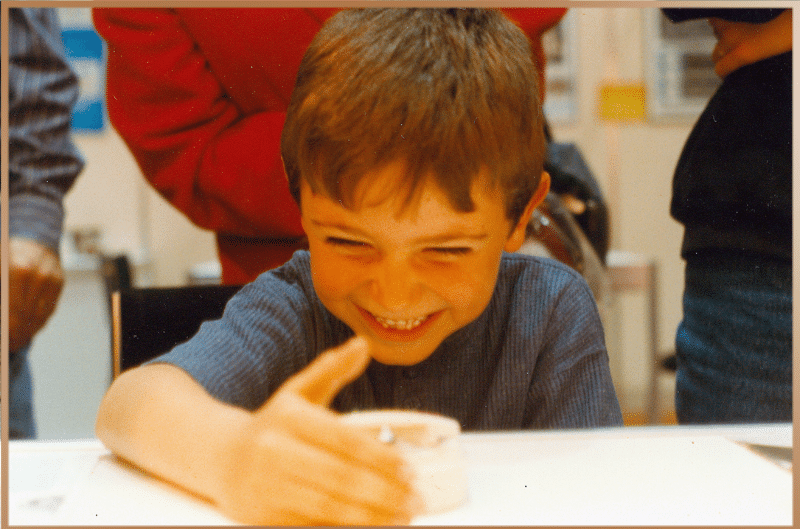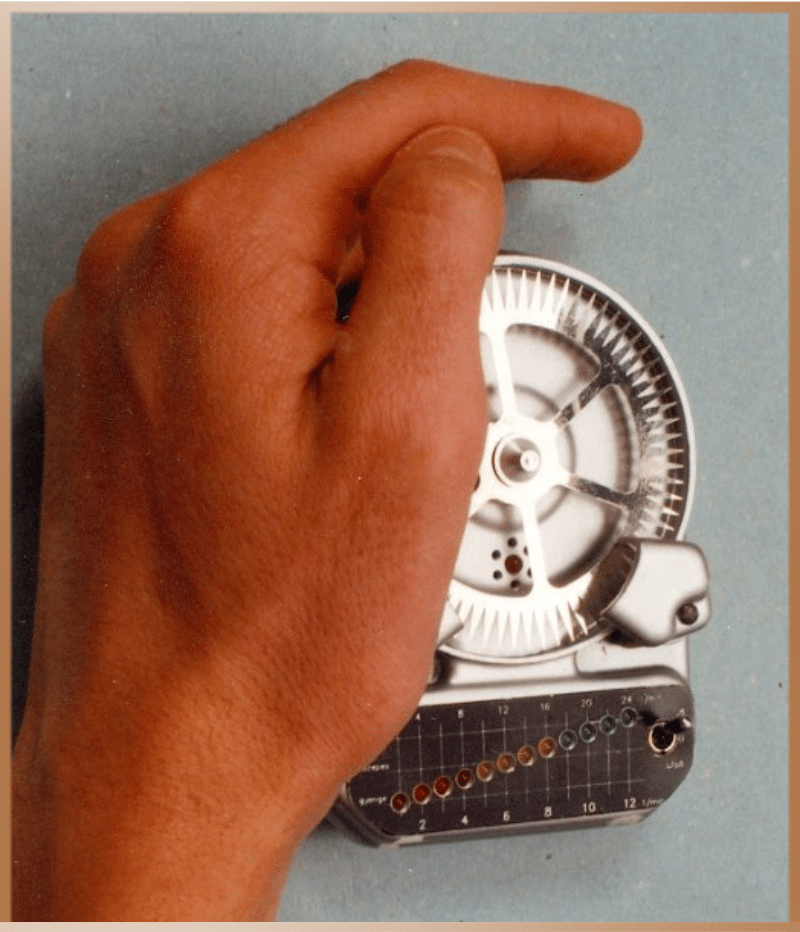
16 Jan The Measurability of Emotional Exhaustion: Observations with the Egely Wheel Vitality Meter
Mental weariness might indeed be worse than its physical counterpart. While the body’s fatigue is often short-lived and easy to recover from, the mind’s exhaustion proves harder to overcome. Problems stemming from professional, personal, or familial situations, particularly those that look bleak, can lead to severe mental exhaustion, and even worse: depression. However, such states and their evolution can be effectively measured and monitored with the Egely Wheel which is a specialized vitality measuring device.
While developing and rigorously testing the Egely Wheel, I have gained significant insights into fatigue, and notably, the measurable impact of stress. Our mass assessments conducted in high schools provided abundant opportunities to detect the considerable stress faced by students (during exams and oral tests) through the lens of our device.

A distinct pattern emerged from our observations: the vitality of students consistently fell far below the average healthy levels in the hour preceding challenging tests. Remarkably, after completing these tests or oral exams, there was a noticeable shift towards a state of mental liberation, as evidenced by measurement results, which showed a doubling of the initial vitality scores. This clearly indicates that anxiety can rapidly deplete our energy and vitality, even in the span of fifteen minutes.
Curious about measuring your Life Energy? Explore the innovative Egely Wheel!
Furthermore, our initial reaction to stress is that the circulation of life energy stops, resulting in a rapid dissipation of our energy. It was frequently observed that external disturbances, such as the sound of a school bell or a car horn, could abruptly stop the vitality meter’s rotation during measurements showing promising results. This immediate halt was a clear indicator that the outflow of life energy from the student’s body had ceased. Such sudden noises led to an automatic reaction where the body closed off its ‘energy gates‘, preserving all life energy in a standby mode. The body remained in this state of energy conservation, not reopening the ‘gates‘ until the emergency phase was over and calm was restored, a process typically taking about fifteen minutes.
Understanding the Meaning of Life Energy: The Egely Wheel’s Thirty Years of Innovation
We began the mass production of the Egely Wheel thirty years ago, in 1993, following approximately ten years of prior research work. The device’s mechanism is elegantly simple: bioenergy or life energy passing through its wheel initiates rotation. The speed of this rotation correlates with the amount of bioenergy passing through, functioning in a manner similar to an electricity meter, generally measuring the energy flowing from our hands.

This energy flow isn’t confined to hands alone; it also radiates from other body parts like elbows, ankles, or the head. For example, if the device is placed on a table while someone is seated underneath, it can measure the bioenergy emanating from their head. In the initial stages of development, before the electronic rotational speed meter was incorporated, we experimented with numerous wheels to detect energy flow that is particularly sensitive around the body’s joints like hands or feet. This discovery suggests that the human aura, essentially an energy force field, could potentially be charted and quantified. This would provide an in-depth understanding of the dynamics and intensity of energy flow unique to each individual. Technically, this would have been a very challenging task, and regrettably, I never managed to secure enough funds to implement the concept in practice.
However, extensive measurements conducted on many people, particularly thousands of high school students, revealed that the vitality level for an average healthy individual hovers around 6 rotations per minute. We regard this rate as the standard for health, established similarly to how physicians determine normal rates for blood sedimentation. In our assessments, we use this empirically derived average as a benchmark, categorizing vitality levels as either below or above this standard.
The biggest technical hurdle we encountered was designing a wheel that was robust yet compact, and simultaneously resilient to minor external forces while retaining a degree of flexibility. Through a series of meticulous experiments, we identified the optimal bearing, taking into account that minimal friction was also crucial. Importantly, the electronics in the device are solely for measuring rotational speed and do not influence the phenomenon: the device can demonstrate the effect even in an inactive state. The most intriguing measurements are obtained when devices are placed beside both hands simultaneously, as they reveal how someone can channel this energy from one side of their body to the other. Notably, the peak values are recorded when a person lies down with their hands resting at their sides. In this state of relaxation, there’s an increased capacity to ‘spare‘ vitality, resulting in higher energy ‘emission‘.
We also uncovered that certain individuals are sensitive to weak magnetic fields, indicating that the direction one faces significantly impacts the results. The most beneficial direction is southeast, while results tend to be slightly weaker when positioned perpendicular to it. Moreover, it was observed that at specific locations within a house, particularly where water veins intersect, this energy gets completely blocked, leading to exceptionally low readings. Consequently, the Egely Wheel can also serve, indirectly, as a tool for detecting water veins.
Energy Profiles of Extroverts and Introverts: Insights from the Egely Wheel
In psychology, it’s long been recognized that people can be divided into two major temperament groups: introverts who are quiet and prefer to spend time alone and extroverts who are energetic, active, and easily able to build social connections. The difference in energy levels measured by the Egely Wheel between these two types is striking; unsurprisingly, the more outgoing individuals have higher measurable life energy levels, and this group includes a larger proportion of women.
Interestingly, it was consistently observed that exceptionally high energy levels were exclusively exhibited by men. When it comes to intellectual abilities, our measurements showed no discernible differences between introverted and extroverted individuals. Therefore, it’s not accurate to suggest that more outgoing people are inherently smarter or that introverts are less intelligent.
Contrastingly, significant differences were apparent among girls. Generally, those considered more attractive showed higher energy levels, possibly because beauty often attracts positive attention, contributing to a feeling of success and thereby boosting vitality. On the other hand, girls who considered themselves less attractive faced more stress, which greatly influenced their life energy levels. This distinction was less evident among boys, for whom physical looks did not seem to generate the same level of stress or a big decline in life energy.
Sun, Exercise, Music, Humor: a Practical Guide to Boosting Life Energy
Through our comprehensive measurements by the Egely Wheel, we have discovered effective strategies for alleviating stress, or, put differently, for increasing vitality. I can recommend four definitive methods that unequivocally boost vitality: sun exposure, physical work, music, and humor. People generally had much higher vitality levels in sunny weather compared to when it was rainy and gloomy. Therefore, I regard solarium sessions as more than a mere vanity; they are an effective antidote to depression, noticeably enhancing the body’s vitality. As a result, people in Mediterranean countries tend to be more cheerful and smile more often.

Physical exertion and regular exercise are also potent enhancers of life energy. A case in point: after engaging in game-centric physical education classes, all students displayed a marked increase in vitality levels. Intriguingly, this boost in vitality was not simply a consequence of raised body temperature, as it remained evident even after the students had cooled down with cold water following the class. An effective physical education class typically resulted in a 20-30% increase in vitality levels, though the duration of this surplus energy was not measured.
Spiritual Uplift
Elevate your wellness journey with the Egely Wheel Life Energy Meter. A must-have tool for those seeking to understand and boost their well-being.
Similarly, a good joke or an enjoyable piece of music elicited a similar rise in vitality. Fascinatingly, it is not necessary to hear the joke or music repeatedly; simply reminiscing about it is sufficient. Engaging in this imaginative process, a method often employed in mind control, proves to be exceptionally beneficial. Regular practice and application of this mental exercise can significantly boost vitality levels.
Thus, illnesses triggered by continuous stress or depression are not inevitable, nor are they a matter of fate. Each person has the opportunity, if not for a solution, then at least for a recovery. Even if we cannot replace a nagging spouse or a tyrannical boss, everyone can think of a beautiful melody or a sunny beach. I know this might seem like scant consolation to some, yet using these simple, low-cost strategies can make the difference between successful and unsuccessful people. It’s a popular misconception that successful people don’t have problems; in reality, they often face more, but cope with them more effectively. The hallmark of success, as opposed to mediocrity, is a greater resilience to stress, possibly achieved through adept employment of stress-relief tactics, which fosters rapid recovery from adversities.
The most effective strategy is undoubtedly a personalized blend of these practices. Integrating breathing exercises and creative visualization with light therapy can empower us to weather even the most strenuous challenges unscathed. If we’re unfamiliar with or don’t utilize these techniques, even a minor experience of failure can severely burden our body and spirit’s energy storage capacity, inevitably leading to chronic illnesses in the long run and ultimately shortening our lives.
2 Sources +
Egely Wheel has strict sourcing guidelines and relies on peer-reviewed studies, academic research institutions, and medical associations. We avoid using tertiary references.
- What is the Egely Wheel? – https://spiritualmaker.com/
- The Egely Wheel & Its Further Potential – https://www.researchgate.net/

